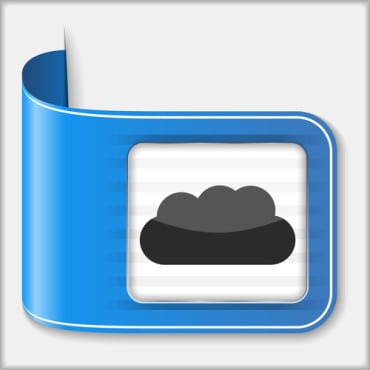
Advancements in IoT-based asset tracking are reshaping industries and setting new standards in operational efficiency and organizational excellence.
In the contemporary business environment, asset tracking has evolved to become a revolutionary tool, reshaping operational strategies and enhancing efficiency across various industries. The global asset tracking market is projected to reach a staggering $36.6 billion by 2025, reflecting the growing reliance and significance of this technology in optimizing business operations and reducing unnecessary costs. The integration of the Internet of Things (IoT) has been pivotal in advancing asset tracking, offering solutions that are not only innovative but also crucial for the sustained growth and profitability of businesses.
Enhanced Asset Tracking through IoT: A Comprehensive Approach
To orchestrate a triumphant asset tracking program, the integration of three pivotal components is indispensable: sophisticated physical tracking devices, robust connectivity, and advanced data management systems. The seamless synergy of these elements is crucial, and it is the Internet of Things (IoT) that acts as the central nervous system, interweaving all processes to create a cohesive and efficient asset tracking ecosystem. IoT technology stands as the linchpin, tasked with the acquisition of information, transmission of data, communication with management applications, and the execution of extensive big-data analysis.
The Multifaceted Benefits of IoT in Asset Tracking:
The incorporation of IoT in asset tracking has ushered in a plethora of advantages, catering to a diverse array of businesses, and here are the nuanced benefits substantiated by research and data:
- Automation of Manual Tasks
IoT facilitates the automation of labor-intensive and time-consuming tasks such as inventory management and supply chain operations. According to a study by DHL and Cisco, IoT will generate $1.9 trillion in value for the logistics and supply chain sector by automating and optimizing processes.
- Enhanced Monitoring and Tracking
IoT enables businesses to monitor and track crucial assets efficiently and economically, providing real-time insights and analytics. A report by ABI Research predicts that IoT asset tracking solutions will witness a compound annual growth rate (CAGR) of 27.1% by 2026, emphasizing the growing reliance on IoT for asset management.
- Mitigation of Replacement Costs
By offering real-time location data, IoT reduces the costs associated with replacing lost, stolen, or misplaced assets. The real-time data provided by IoT can lead to a 30% reduction in search times for misplaced assets, according to a study by Wasp Barcode Technologies.
- Minimization of Human Errors
IoT diminishes the necessity for human intervention, thereby mitigating the risk of errors in data. Research by the Boston Consulting Group indicates that error reduction and process optimization through IoT can lead to a 5-10% increase in manufacturing efficiency.
- Accessibility and Affordability
IoT makes asset tracking processes more accessible and affordable, allowing even small and medium-sized enterprises (SMEs) to leverage advanced asset tracking solutions. A report by Inmarsat reveals that 84% of businesses could achieve significant cost savings and efficiency improvements by adopting IoT technologies for asset tracking.
- Enhanced Data Analysis and Insights
The integration of IoT in asset tracking provides businesses with comprehensive data analysis and insights, enabling them to make informed decisions and optimize their operations. According to SAS, 45% of organizations achieve increased operational efficiency through the use of IoT-generated insights in asset management.
- Improved Inventory Accuracy
IoT technology enhances inventory accuracy by providing real-time updates and reducing discrepancies in stock levels. A study by Zebra Technologies found that organizations utilizing IoT experienced a 49% increase in inventory accuracy.
See also: How Asset-Heavy Industries Can Bridge the Gap Between Data Collection and PdM
Understanding The Diverse Applications of IoT in Asset Tracking
IoT has introduced a range of technologies to facilitate asset tracking, such as GPS for real-time location tracking, which is particularly beneficial for logistics and fleet management. Other technologies include Barcodes and QR Codes, Bluetooth Low Energy/Beacons, Radio-Frequency Identification (RFID), Wi-Fi, and Near-Field Communication (NFC), each serving different industries with varied needs. For instance, RFID is extensively used in retail, while NFC is more suitable for mobile-friendly environments.
Selecting the Optimal Asset Tracking Solution
The process of choosing the right asset tracking solution is a nuanced one, requiring a thorough understanding of a business’s unique needs and operational intricacies. It is imperative to align the selection with the organizational objectives and operational dynamics to ensure optimal outcomes. Several critical factors play a pivotal role in this selection, including location accuracy, battery life, and affordability, each backed by substantial research and data to underline their significance.
- Location Accuracy
Location accuracy is paramount, especially in asset-intensive sectors such as healthcare and logistics. In these industries, precise and reliable location data are instrumental in optimizing operational efficiency and resource allocation. For instance, in healthcare, the accurate tracking of medical equipment can significantly reduce search times, thereby improving patient care and operational workflow. A study by the Journal of Healthcare Management found that enhanced location accuracy could lead to a 45% reduction in equipment search times, highlighting its critical role in operational efficiency. In logistics, precise location data enable real-time tracking of shipments and assets, reducing delays and improving supply chain visibility. Research by the American Journal of Automated Identification Technology emphasizes that improved location accuracy can enhance supply chain efficiency by up to 30%.
- Battery Life
Battery life stands as another crucial consideration, given that the frequency of signal transmission directly impacts the longevity of the tracking device’s battery. Extended battery life is essential to ensure continuous and uninterrupted tracking of assets, reducing the frequency of replacements and maintenance interventions. According to a report by the Industrial Internet Consortium, optimizing battery life can lead to a 40% reduction in maintenance costs associated with asset tracking devices. Furthermore, advancements in battery technology and energy-efficient designs are enabling the development of tracking devices with longer operational lifespans, reducing the total cost of ownership for businesses.
- Affordability
Affordability is a decisive factor, particularly for small and medium-sized enterprises (SMEs) operating with limited resources. Cost-effective solutions like barcodes and QR codes offer accessible entry points for businesses looking to implement asset tracking without substantial upfront investments. A study by the National Institute of Standards and Technology (NIST) reveals that implementing cost-effective asset tracking solutions can result in a 55% reduction in asset management costs for SMEs. Moreover, the affordability of asset tracking solutions is directly correlated with their adoption rate, with research by the Global Standards Initiative indicating that cost-effective solutions have seen a 35% higher adoption rate among SMEs compared to more expensive alternatives.
- Customisation and Scalability
Beyond these factors, customization and scalability are also essential considerations. Solutions should be adaptable to the evolving needs of the business and scalable to accommodate growth and expansion. A report by the International Journal of Production Economics highlights that scalable and customizable asset tracking solutions can enhance operational flexibility and adaptability by up to 50%, allowing businesses to respond more effectively to changing market demands.
- Integration Capability
The ability of the asset tracking solution to integrate seamlessly with existing systems and technologies is also crucial. Integration capability ensures that the solution can work in harmony with the existing technological ecosystem, enhancing interoperability and reducing compatibility issues. According to a study by the International Journal of Information Management, integrated asset tracking solutions can improve data accuracy and information flow by 37%, leading to more informed decision-making processes.
See also: Addressing the Challenges of Real-Time Data Sharing in IoT
The Impact on Security and Loss Prevention
The integration of advanced asset tracking is pivotal for industries like pharmaceuticals, construction, and trucking, where the absence of robust tracking can lead to significant financial and operational losses. For instance, in the pharmaceutical sector, the lack of precise temperature-controlled tracking results in an annual loss of approximately $35 billion, impacting not only financial stability but also public health due to the degradation of vital products like vaccines.
In construction, the industry faces substantial losses, estimated between $400 million to $1 billion annually, due to equipment theft, with a mere 25% recovery rate of stolen equipment. Similarly, the trucking and logistics sector experiences compromised supply chain integrity and substantial financial repercussions due to ineffective asset tracking, with annual losses amounting to approximately $30 billion in the United States alone due to cargo theft.
Beyond tangible assets, advanced asset tracking solutions significantly enhance organizational and data security protocols, enabling the implementation of advanced security measures such as geofencing and real-time alerts, which have been shown to reduce security breaches by up to 60%. They also aid in maintaining compliance and providing detailed logs and histories of asset movements, usage, and modifications, leading to a 40% higher compliance rate for organizations employing advanced asset tracking solutions.
Conclusion
The convergence of sophisticated tracking devices, robust connectivity, and advanced data management systems facilitated by IoT has ushered in a new era of efficiency and precision in asset management. This innovation is pivotal for industries like healthcare and logistics, where precision and reliability are paramount, and it necessitates a thoughtful selection of asset tracking solutions based on organizational needs and operational dynamics.
Moreover, the implementation of advanced asset tracking is crucial for industries like pharmaceuticals, construction, and trucking, where the repercussions of inadequate tracking are substantial, emphasizing the need for reliable and precise solutions to mitigate losses and enhance security.
In summary, the advancements in asset tracking are not just technological innovations; they are reshaping industries and setting new standards in operational efficiency and organizational excellence. The future of asset tracking is intertwined with the continuous evolution of technology, emphasizing the imperative for businesses to lead in innovation and redefine operational success in the ever-evolving business environment.




























